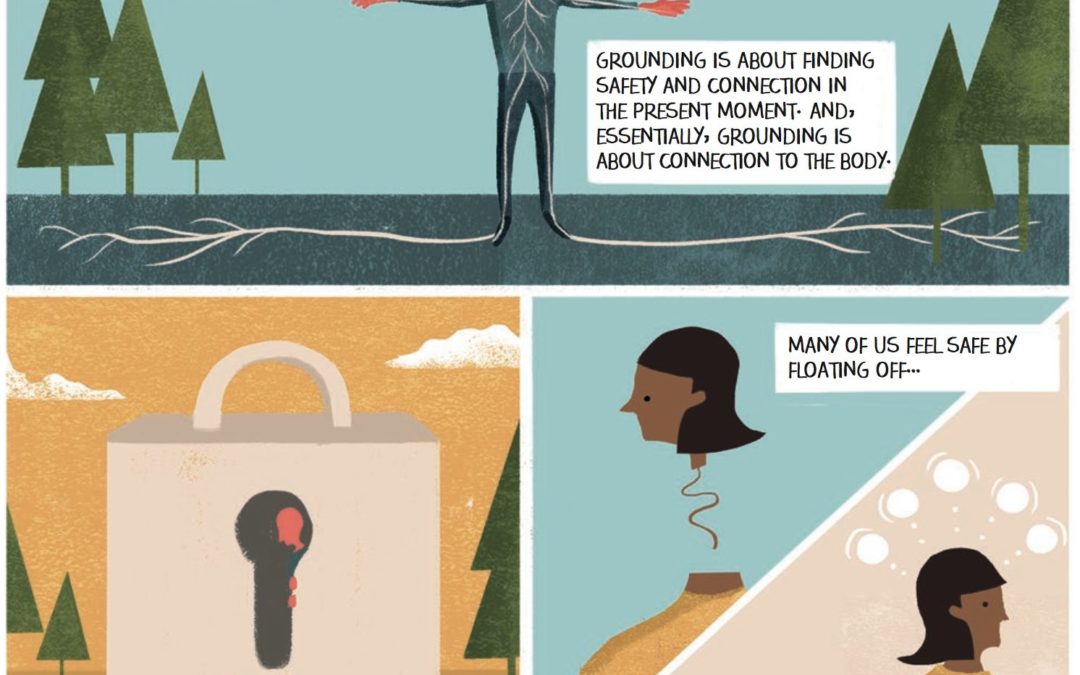Many people are experiencing more anxiety than usual in the face of the global pandemic. Whether you’d like some guidance for your own anxiety, or you’re working with people who need extra support, I hope these ten approaches help you to feel more freedom and ease.
Anxiety is strange and complex. It is, however, rooted in physiological responses inside us. Anxiety is much more than faulty emotion circuits. We can learn to reframe sensations and be free to respond differently, using simple tools and practices:
1. Grounding
In times like these, it’s key that you consistently put down some roots and find ways to wake your body up. Grounding is about creating safety and connection in the present moment. And, essentially, grounding is about connection with the body. It helps you feel real.
2. Work to create a safe space
Many of us feel safe by floating off, or by thinking quickly or limiting ourselves. Notice these patterns, especially reading news, or talking about the pandemic. Work to create safe space, find safe people (this might need to be online right now), say safe things. Changing the context can lead to feelings of ease and comfort in the body.
3. H.A.L.T
This is a simple tool from the field of addiction. Do not make a decision if you’re Hungry, Angry, Lonely or Tired. Whatever the complex forces acting within us, we have to satisfy our fundamental human needs – this will reduce your sensitivity to things that make you anxious.
4. Do the simple stuff well
This may sound basic, but it’s important, and it’s easy to get out of rhythm in a time of crisis. Eat healthy food at regular intervals, de-stress in whatever ways work for you, engage with people (again, this might need to be online right now), and most of all, rest and take care of your sleep.
5. Cognitive distraction
Stepping outside our own seemingly out of control process can be helpful when we’re anxious. And cognitive distraction, for example making lists, can be useful, but being in nature is best (if you’re in a part of the world where that’s possible right now).
6. Cultivate awe
Cultivating awe slows down the nervous system. When was the last time you looked at the sunset or checked out the stars or simply appreciated your aliveness?
7. Connect
Connection to body, connection to self, connection to others, connection to nature, connection to mystery. These are all interwoven, interdependent and key when it comes to easing anxiety in difficult times.
8. Reframe
Reframing is a tried-and-tested technique for changing anxiety, used by psychologists and mindfulness practitioners. Note the nuances and details of the sensations inside you. Try “where do I feel that in my body right now?’ rather than “why do I feel anxious?“. Keep noticing. Go slow. Cultivate the gap between physiological shifts and co-emerging emotions, thoughts and memories. In the gap, can you reframe “I am anxious“, to “there is something like anxiety inside me“.
9. Acknowledge the simple logic of your old brain
Ask yourself, “what’s the worst that could happen“. If you’re full of catastrophic thoughts, explore them, but do not trust them. Know your primitive brain is most likely mistakenly predicting life-or-death scenarios. Ground yourself, and change the context.
10. Cultivate your inner cheerleader
Getting bogged down in negative self-talk can be a real problem in anxiety. Try not to get lost in over-thinking and listening to your inner critic. Anxiety is an over-protective feeling. Have self-compassion towards the cautious, fearful parts of you, but do not feed the flames. Cultivate your inner cheerleader: “you are fine, you can do this“.
It’s good to remember that to overcome anxiety you do not need to remember or understand the cause. The goal is simply to use a helpful tool, like the ones above, to self regulate in the present moment.


